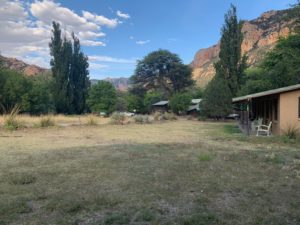Lab fieldwork has shifted from the Flight Lab at the University of Montana to the Chiricahua Mountains, a “sky island” in southeastern Arizona. Here we will work at the Southwestern Research Station (SWRS), where the Lab has conducted hummingbird research for 35 years.

Our focus this year will be on how hummingbirds might use behavioral thermoregulation as a means of dissipating body heat accumulated during hovering bouts when environmental temperatures are warm. Motivation for this work came when our measurements of passive and evaporative heat dissipation during hovering appeared insufficient to deal with the extra heat projection that occurs due to the mechanical inefficiency of hummingbird flight muscles.
During this trip we will conduct two studies, one in the laboratory and one in the field. In the laboratory undergraduate researcher Elliot Shannon will offer hummingbirds a choice between a perch at ambient temperature and one that is artificially cooled to several degrees below ambient temperature. The experiment will be run across a range of environmental temperatures. The initial hypothesis is that when temperatures are warm (mid to upper 30’s °C) that the hummingbirds will choose the cooled perch to dissipate heat following hovering bouts. Normally ambient temperatures during the day are sufficiently warm that we can use naturally occurring temperatures cycles for such experiments. However, this year temperatures were unusually mild so we ended up using heat lamps to increase ambient temperature (yes, everyone laughed at us). Experimental trials were using the three common hummingbird species at SWRS: blue-throated mountain-gem (AOS just changed the common name from blue-throated hummingbird), Rivoli’s hummingbird, and black-chinned hummingbird.
The field experiment, conducted by undergraduate researcher Nathaniel Shiiki, tracked hummingbird use of perching locations around the station’s feeder patch throughout the day. Included in the protocol was placement of iButtons at typical hummingbird perches to measure perch-microclimate temperature cycles as well as trail cameras on feeders to monitor feeding frequency and duration across a range of daytime temperatures. The primary purpose of this work was to see if hummingbird perch selection throughout the day was consistent with the intentional selection of cool microclimates to dissipate heat accumulated during hovering bouts.

